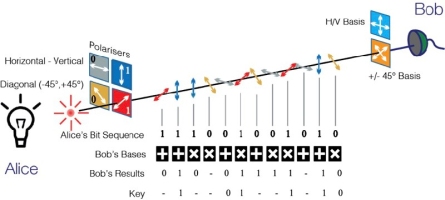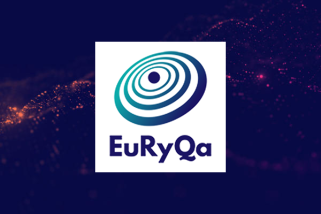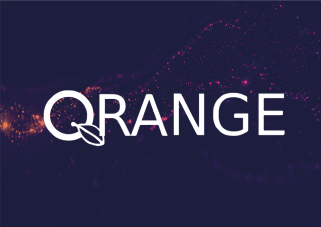
Quantum Key Distribution (QKD)
The concept of quantum key distribution (QKD) was first proposed in the 1970s but it wasn’t until the 1980s that it really came to light. The idea was incredibly simple yet it still took until the 1990s, when the connection was made to entanglement, that physicists started to get really interested. Since then the progress has been remarkable and it is now perhaps the most mature quantum technology, being commercially available for over 15 years now.

Today’s digital society is highly dependent on the security of data, both during communication as well as in storage, for example in e-banking, e-business, e-health, or e-government channels. With the progress of quantum computers that can potentially break this security, the risk for everyone is increasingly real.
Especially if one considers health, where records may need to be secured for a person’s lifetime, QKD is the one technology that can actually address this issue of long-term security. Similarly the critical infrastructure that provides e.g. energy, needs to also address this risk and quantum technologies again hold the key.
While commercially available for many years, progress continues on making these systems more compact, cheaper, and capable of operating over longer distances. These are all critical for the uptake of these technologies by governments and industry. The integration of these QKD systems into the existing network infrastructure is the current challenge and multidisciplinary teams of telecommunication equipment manufacturers, critical infrastructure providers, network operators, QKD equipment providers, digital security professionals and scientists, are working on this.
QKD provides a way of distributing and sharing secret keys that are necessary for cryptographic protocols. The importance here is in ensuring that they remain private, i.e. between the communicating parties. To do this, we rely on the what was once seen as the problem of quantum systems; if you “look” at them, or disturb them in any way, you “break” the quantum characteristics.
Typically, information is encoded on single photons, as shown in the figure. Alice can chose to encode these in a “bit sequence” using one of two states, like vertical (V) or horizontal (H) polarisation, and she also can chose to encode in two different states; here, two combinations of these states labeled +45° and -45°. Bob then choses to measure in one of the two, what we call bases – either he measures H,V, or he measures +45°, -45°. If he measures in a base that is different from the one Alice used to prepare, then his answer will be random and discarded, but if they chose the same one, then they will have perfectly correlated results; Alice sends H and Bob detects H, and these are kept. This last step requires Alice and Bob to communicate about which base was used but reveals no information about the result, which now becomes the secret key. This is just one way to do but there are now many variations.
As you see, this just generates a secret key, this then needs to be incorporated into cryptographic protocols to ensure security in the various applications where they’re used. The beauty that quantum physics brings to this solution is that if a spy or a hacker tries to intercept the key generation, they will introduce errors and reveal themselves. Importantly, this happens before any information is encoded or communicated!
Laboratory demonstrations and some field tests of QKD in the 1990s paved the way for the first commercial systems in the early 2000s. Since then, we have seen the development of all the underlying technologies and new protocols for QKD and security applications that can exploit them. High rates (>Mbps) and long distances (>400km) have been demonstrated and both academic and commercial systems continue to get smaller and cheaper. This is expected to accelerate in the coming years and more integrated solutions are adapted for QKD. In 2019, we will also see the launch of a European testbed for QKD that will provide a showcase for these technologies and solutions, which will bring increased industrial interest to the field and accelerate the uptake of QKD-enabled solutions globally.



